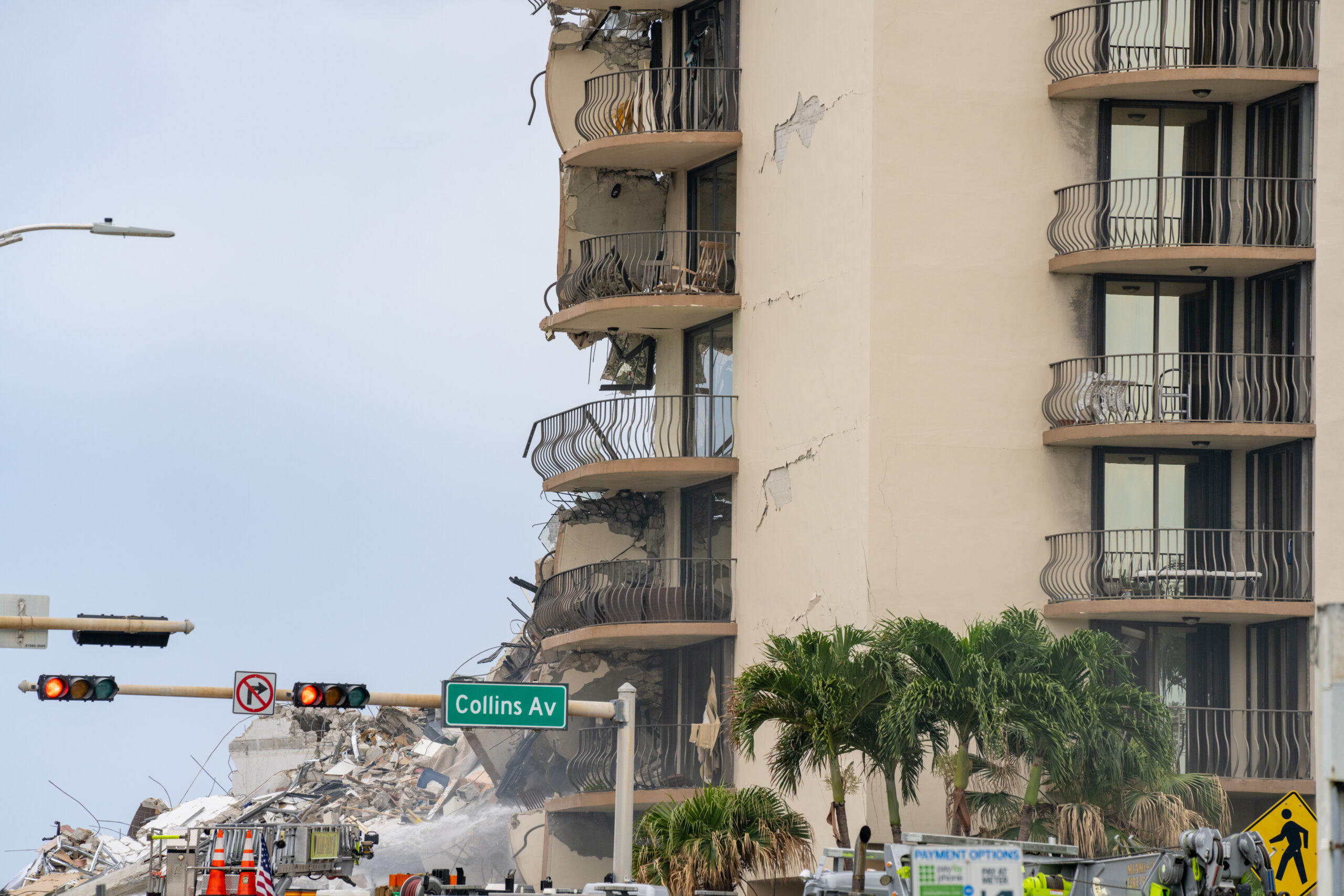Goal 1 | Highlight the societal benefits of enhanced service life for new and existing structures
Concrete structures can be designed and built for long service lives.
They are resilient to natural disasters (wind, storm, earthquake, wildfire, etc.) and can provide protection to human lives. And even though design is usually made to a designated service life, concrete structures often remain in use for long after that intended service life is reached.
Design for durability is a key feature for new construction, service life extension, and preservation phases. Using the similar amount of resources to construct buildings with enhanced service life gives people a sense of safety and provides stability for generations to come.
However, lack of having durability requirements in the regulated building codes and/or lack of timely maintenance and repair programs can cause tragedy.

Miami, FL, USA – June 24, 2021: Sections of the champlain towers Surfside Miami Beach which collapsed
On June 24, 2021, at 1:22 AM, Champlain Condominium Towers South in Surfside, Florida, partially collapsed. The building, which was completed in 1981, was known to have deteriorated conditions and engineering reports had recommended extensive repairs – which had not been implemented.
Since then, increased scrutiny has been focused on the structural conditions of ocean-front reinforced concrete high-rise structures, and more stringent laws have been enacted in many jurisdictions. Since the collapse of the building, the National Institute of Standards and Technology (NIST) has been investigating the collapse and identifying causes of the failure.
In February 2025, NIST submitted to Congress an update on its investigation. The report noted that the team has completed all experimental work on the physical evidence from the building’s structural elements and should reach conclusions on the causes of the collapse within another year.
The goal of the NIST investigation is to uncover factors that contributed to the collapse of the building and make recommendations to improve public safety and preventative measures for recurrence of failures cause loss of lives.
Through proper maintenance and care programs for concrete structures, their integrity can be confirmed and minimum disruption of daily life (e.g.shutdown facilities for use, productivity downtime, traffic interruption, noise, dust) can be achieved. By avoiding irreversible deterioration and damage, less construction materials/resources need to be wasted and be deployed for new constructions.
This leads to the reduction of health hazards to both occupants and construction workers, such as fine particulates in the air, vibration, and acoustic pollutions (https://build-construct.com/building/health-impactsbuilding-materials/).
The savings in financial resources can be redistributed to other personal or societal needs. Historic preservation to maintain the character of communities and even national pride was demonstrated by the recent re-opening of Notre Dame Cathedral in Paris. Magnificently resurrected by a massive 5 year restoration project following a devastating fire in 2019, Notre Dame Cathedral stands proudly once again, having regained its world-famous opulent splendor.
OBJECTIVES
Support the inclusion of durability requirements in codes and standards, such as ACI 318 and ASCE.
Follow international guidelines like ISO 2394, which specifies a 50-year service life for buildings. SHRP 2 and RILEM TC 230 PSC call for even longer service lives.
Educate owners on the importance of regular maintenance of concrete structures to prevent deterioration and keep them safe.
Emphasize common sense and education – teach owners the light duty tasks that can be done to prevent deterioration.
